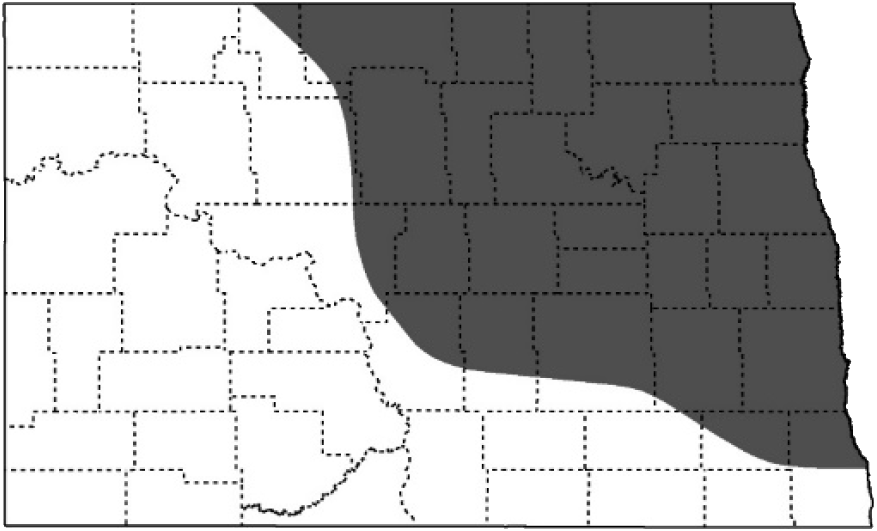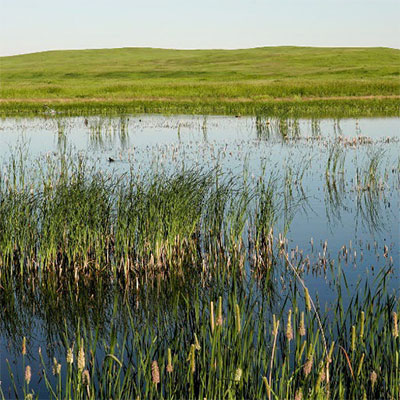Yellow Rail

L 7.25”, WS 11”, 1.8 oz. A cryptic and secretive bird, it is yellow-buff overall, striped back, short tail and stubby yellow bill.
Status in North Dakota
Occurs in North Dakota from mid-May to mid-August. Peak breeding season early June to mid-July.
Reason for SWAP Designation
Regionally or globally imperiled, ND range important (SGCN a., b.).
ND ranks 1st out of 4 states for highest percent of `population during the breeding season (eBird).
Small population but large `geographic range.
The Yellow Rail is declining, and ND has high stewardship `responsibility for this species in the Prairie Pothole Region.
Threats
Loss and degradation of wetlands, drainage and wetland consolidation.
Hydrologic shifts in wetlands of the PPR due to wetland consolidation and drainage, climate and land use changes (i.e. lakeification).
Classified as climate-endangered, Yellow Rail is projected to lose more than half of its current distribution by 2050, with no net gains of new areas (Audubon).
Increasing applications of agrochemicals and adverse impacts to water quality, the wetland vegetative community, and the aquatic invertebrate community.
Aquatic nuisance species spreading and damaging wetland ecosystems.
Yellow Rails use fens, which are rare and extremely vulnerable in North Dakota.
Invasive hybrid cattails spread aggressively and can dominate sensitive fen habitats.
Human disturbance from wildlife observers entering Yellow Rail habitat to view these difficult to observe birds could cause abandonment or destruction of nests.
Yellow Rails may be killed from machinery during mowing or haying.
Collisions with human-made structures (e.g. overhead lines).
Research and Monitoring
Habitat requirements and demographics have been researched, but little effort in North Dakota.
Additional information is needed on breeding, migration and wintering behaviors.
eBird and Partners in Flight Databases are key sources of information on distribution and population trends.
Poor detection on the Breeding Bird Survey.
Yellow Rails are secretive, and monitoring could involve targeted call-response surveys.
Management Recommendations
- Preserve and maintain wetland complexes, particularly fen habitats.
- Restore hydrology and vegetation to degraded wetlands.
- Avoid water manipulation which creates a hemi-marsh or deep-water marsh.
- Prevent and remove encroachment of woody vegetation around wetlands.
- Conduct management to open cattail-choked wetlands.
- Delay haying or mowing until after August 1.
- Follow aquatic nuisance species rules and regulations.
- Follow beneficial or best practices during the design, siting, construction, operation, and maintenance of tall structures (e.g. transmission lines, communication towers, wind turbines).
- Raise awareness among wildlife observers to avoid approaching nesting sites.



